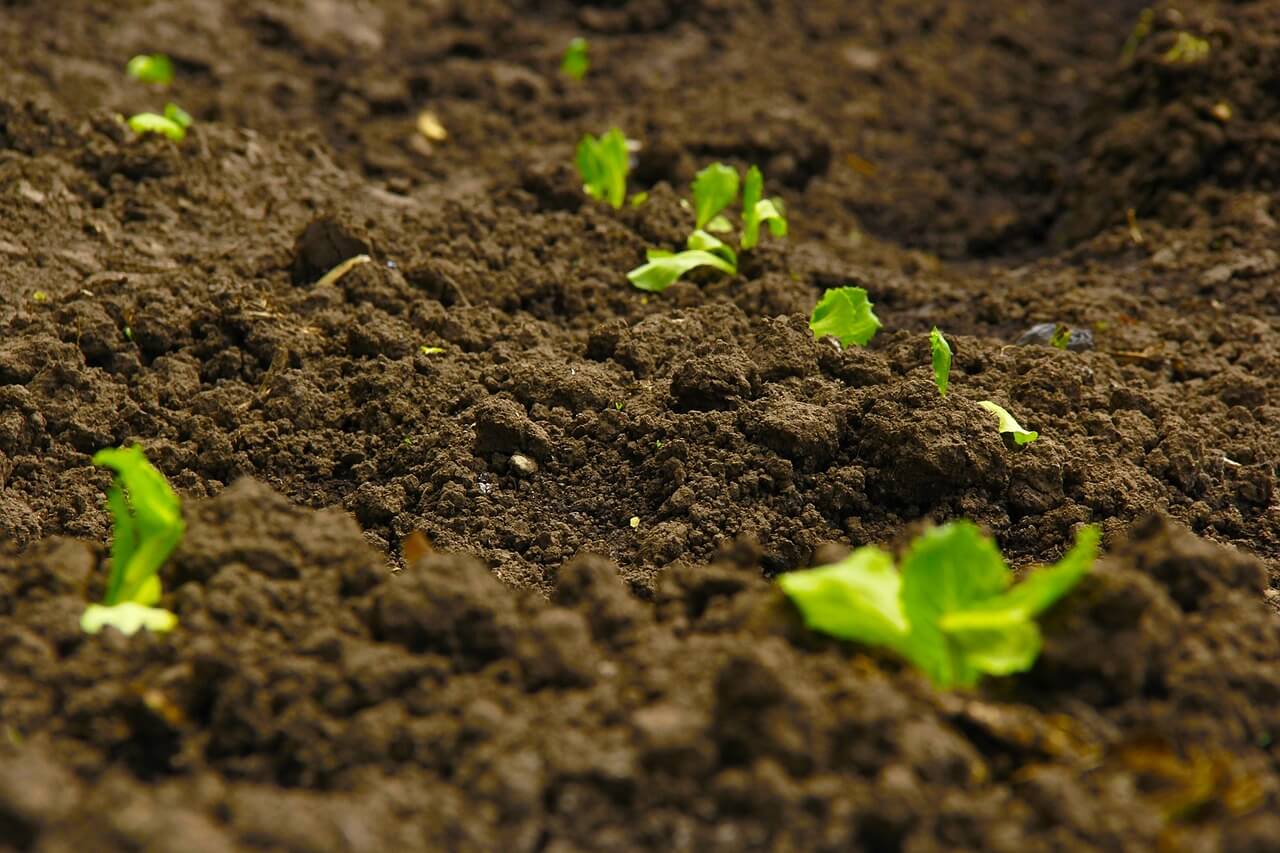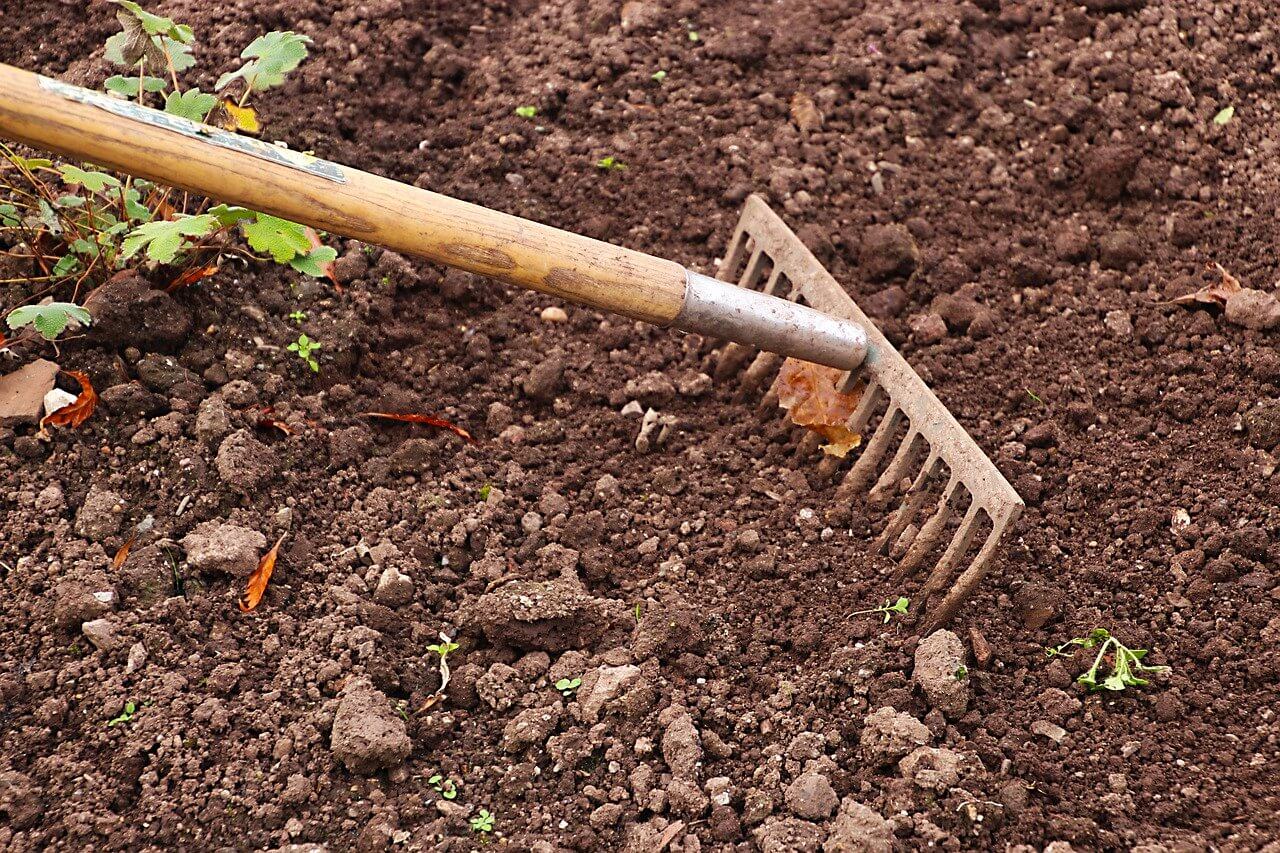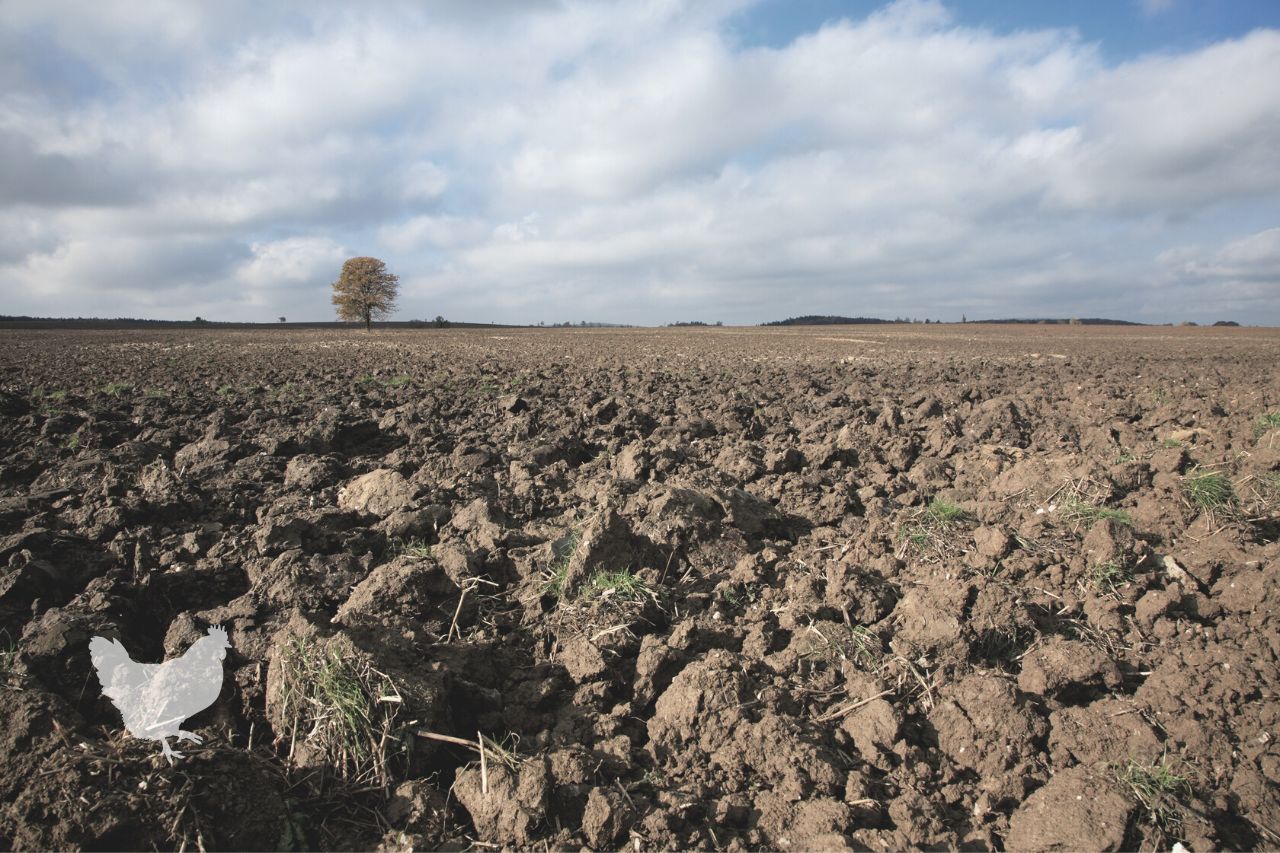If you’re wondering how to amend clay soil in farm ground, you aren’t alone. Clay soil offers a myriad of benefits to farmers but also poses some unique challenges. Here are some tips to help you deal with it.
What You'll Learn Today
- What Does Good Farm Soil Contain?
- Should You Amend Clay Soil?
- How Do You Improve Clay Soil for Farming?
- How Do You Amend Clay Soil Without Digging?
- What is the Best Way to Amend Clay Soil?
- Frequently Asked Questions
- How does adding compost improve the quality of clay soil?
- Will adding compost always correct clayey soil?
- What makes clay soil different from other types of soil?
- How do you know if you have heavy clay soil?
- How does high clay content negatively impact gardening?
- Is some clay content good for gardening?
- What is the best kind of soil for growing a healthy lawn or garden?
- How do you arrive at a healthy soil mix if you have heavy clay soil?
- How does flocculation work, and how does compost help?
- How can you get flocculation to work faster?
- How long will it take to amend my heavy clay soil?
- Is it better to work compost and amendments into the soil or just add them to the soil surface?
- How do you keep soil from becoming compacted?
- How does Gypsum help with clay soil?
What Does Good Farm Soil Contain?

Good farm soil contains a combination of great texture, adequate nutrients, and excellent drainage abilities.
Soil can be loam, sand, loamy sand, clay, silt, chalky, or peaty. It can be any combination of those seven types, too.
To grow strong, healthy, and productive plants, you need soil that holds enough water and nutrients to support plant life but not so much so that plants drown or suffer from nutrient toxicities.
Should You Amend Clay Soil?
Of all the types of farm soil, clay soil is composed of some of the densest and smallest particles. These particles are prone to compaction and can cause serious drainage issues. That said, it also offers several benefits.
Let’s dive a little deeper.
Take Time to Test
First, before you make the decision of whether or not to amend your clay soil, it is important that you know for sure that you have clay soil in the first place.
A simple soil test will give you an approximate evaluation of the soil type you have on your property but keep in mind that you may not have the exact same type of soil on every corner of your property. Soil type can vary widely even within the same acre of space.
To check the texture of your soil, take a sample between your fingers (it should be moist) and rub your fingers together. A sandy soil will feel harsh and gritty while clay and silt will feel smooth and somewhat slippery.
You can also test by forming a ball of soil with your hand – again, this soil should be moist. If the ball breaks when it is tapped, it is probably sandy. If it stays intact, then it contains more clay (and possibly silt) than sand.
The “Good” of Clay Soils
Clay soil is often viewed as a negative thing, but in reality, it has several benefits. In fact, it can be one of the best soil types for plant growth.
That’s because the individual particles of clay are extremely small – and because of their surface area, clay soil is better able to hold water and nutrients. When properly managed, clay soil requires minimal irrigation and fertilizer. Your plants will be healthier all around.
The “Bad” of Clay Soils
That said, clay soil also presents several challenges for gardeners. Unlike other types of soil, clay soil has particles that are flat like plates instead of rounded.
This means that clay soil becomes compacted easily. The most common way that clay soil becomes compacted is when you walk in your garden when the ground is wet, but heavy, driving rains can also increase compaction.
Once clay soil becomes compacted, there’s no turning back. It restricts the movement of air, nutrients, and water, making plants more likely to suffer from diseases and nutrient deficiencies.
How Do You Improve Clay Soil for Farming?

There are several ways you can work with – instead of against – your clay soil. Here are some tips.
Aeration
Clay soil becomes compacted more quickly than other types of soil, so finding ways to break up the compaction is essential.
You can use all kinds of tools to create your soil, including a broadfork or digging fork, a plug coring aerator, or an aerating machine (a machine that you can rent at your local farm equipment store).
Here’s a quick, helpful video that will walk you through how to aerate your garden with a fork:
Tilling
Tilling is a good way to temporarily loosen heavy, compacted clay soil, though it shouldn’t be viewed as a permanent solution. Heavy clay soil needs to be addressed with more gradual, impactful steps – while tilling can loosen the soil up enough for planting, it will likely spring back to its more compacted state as soon as it dries.
Add Contours
One of the biggest issues related to clay soil and gardening is its tendency to become flooded, waterlogged, and compacted. Adding contours to the landscape is an easy way to combat this.
Add contours to your garden terrain by creating an undulation of high peaks and low valleys. Building things like terraces, berms, raised beds, or permaculture swales will help you manage water more easily.
How Do You Amend Clay Soil Without Digging?
Many farmers wonder how they can loosen and improve heavy clay soil without digging.
Digging isn’t necessarily a bad thing but it does pose several disadvantages. For one, it can destroy beneficial soil microbiota, making it more challenging to grow plants because the structure and composition of the soil have been altered. It can also introduce weed seeds, something that can certainly do more harm than good when it comes time to plant a garden.
Therefore, you may want to consider some of these helpful zero-dig methods to improve your heavy clay soil.
Adding Compost
Adding compost is a great way to loosen heavy clay soil while also adding beneficial nutrients.
Adding soil amendments like compost is especially beneficial if you do so immediately after you have aerated it. That way, the rain can wash the compost into the holes and soften up the clay. Just know that you’ll need quite a bit of compost to change the soil and it will take time for you to notice lasting effects.
Green Manure
Green manure is another amendment that you can add to heavy clay soil for lasting results. Good options include herbs like comfrey or herbal compost teas.
Leaf Mold
Leaf mold, or piles of leaves that have been allowed to decay for a year or more, are considered leaf mold. Although the name sounds a bit unsavory, leaf mold is highly beneficial. It is rich and crumbly, a fantastic source of nutrients (and a great way to build a better texture) for your plants.
Worm Castings
Worm castings can also be used to improve clay soil. Worm castings are high in minerals, humus, and nitrogen.
Livestock Manures
You can use just about any kind of livestock manure to condition your garden soil but it’s important to get it from the proper source. If animals were treated with medications or chemicals of any kind – or if the manure wasn’t composted correctly – you may be introducing more problems to your soil than it’s worth.
Cover Crops
Planting cover crops is a great long-term solution when it comes to improving the structure of clay soils. While you won’t notice an immediate impact, planting a cover crop will allow you to gain the maximum benefit over time.
The idea of a cover crop is this: a plant will incorporate soil amendments deeper into clay soil by rooting thickly, stubbornly, and in a downward fashion. They’ll enrich the soil while reducing erosion.
Either fall or summer cover crops can help improve erosion. Check with your local cooperative extension to get some ideas on which cover crops might work best for you.
Mulching
Mulching can also help improve clay soils. Bare soil is ripe for compaction and erosion, and mulch can help to prevent this. Whenever possible, use an organic mulch, since this will add nutrients to your soil while also serving as a protectant.
Avoid Compaction
Last but not least, when you are working with clay soils, remember that compaction is the enemy. Do your best to avoid walking in your garden beds, driving over your fields, or doing anything else that will press the soil downward. You need to let it breathe!
What is the Best Way to Amend Clay Soil?
None of these methods is the best way to amend clay soil. Instead, your best bet is to combine a variety of techniques to improve your soil texture.
Don’t expect immediate results. Improving clay soil the right way takes time – be patient, and you’ll reap the rewards!
Frequently Asked Questions

How does adding compost improve the quality of clay soil?
When you add compost to clayey soil, it breaks down into humus. This acts to coat and buffer particles of clay soil. This softens and restructures the soil and adds nutrients. The result is a lessening in cohesion. Looser soil does a better job of feeding beneficial microorganisms and bacteria. Looser, richer soil produces healthier, happier plants.
Will adding compost always correct clayey soil?
Sometimes, just adding compost isn t enough. If you have very heavy clay soil, you may need to add massive amounts of humus, along with liquid soil additives which help accelerate it s processing.
What makes clay soil different from other types of soil?
Differences in particle size account for differences in types of soil. The three main soil types are sand, silt and clay. Clay has the finest particles at less than 0.002mm. When soil is made up of more than half particles of this size, it is heavy clay.
How do you know if you have heavy clay soil?
If your soil is hard and solid when it is dry and cannot be easily crumbled, it probably has a fairly high clay content. If your soil is malleable and holds its shape like modeling dough when it is wet, it definitely has a high clay content.
How does high clay content negatively impact gardening?
Soil with high clay content becomes compacted very easily. This causes poor moisture absorption, as well as poor drainage. After a long dry spell, heavy clay soil will tend to repel rainfall. During very wet weather, it doesn t allow for good drainage. The compacted soil also prevents good air circulation, so plant roots and beneficial fauna are doomed to die.
Is some clay content good for gardening?
A good balance of clay content can be helpful in water and soil retention. The right amount of clay will provide support for plant roots. It can be challenging to arrive at just the right amount of clay in your soil to provide benefits. Strive to hit a balance of about 20% clay content.
What is the best kind of soil for growing a healthy lawn or garden?
The very best and most versatile soil content is about 50% air and water in equal amounts. The remaining 50% should be made up of a healthy mix of sand, silt and clay (approximately 45%) and a small amount of humus. This mixture will provide the right combination of drainage, water retention and nourishment for your grass and garden plants.
How do you arrive at a healthy soil mix if you have heavy clay soil?
The key to improving clay soil consists of encouraging tiny clay particles to aggregate into larger, lighter, airier particles through a process called flocculation. This can be achieved by incorporating natural compost, sand and chemical amendments into the soil.
How does flocculation work, and how does compost help?
This biological process works to group clay particles together. This creates space for air circulation, water drainage and healthy root growth. It also provides living space for beneficial soil-dwelling fauna, such as worms. When compost breaks down and become humus, it coats soil particles and prevents them from sticking together. This, in turn, promotes the growth of beneficial bacteria. This leads to soil restructuring.
How can you get flocculation to work faster?
You can nurture this process along by avoiding the use of harsh chemicals on your lawn or garden. Herbicides and excess salts (contained in commercial fertilizers) slow down the humus building process. Compost adds nutrients and encourages flocculation. In cases of very severe, heavy clay soil, you may wish to use a liquid soil amendment designed especially for stimulating this process. Talk with your local agricultural extension agent to find out what products are working well in your area.
How long will it take to amend my heavy clay soil?
Improving clay soil is an ongoing process, sort of like maintaining a healthy lifestyle. While compost adds potential humus, microorganisms take time to convert it. Expect to apply a regular, ongoing program of soil building in order to see steady, lasting improvement.
Is it better to work compost and amendments into the soil or just add them to the soil surface?
It was once thought that working amendments into the soil was absolutely necessary, but now we understand that this process may actually add to erosion problems while disturbing the integrity of the soil. For this reason, a no-till trend has grown. With this method, you simply add amendments to the surface of the soil in the form of compost and mulch. You might also aerate the soil using a lawn auger or similar tool (or by mowing and gardening in golf shoes). This helps surface amendments make their way into the soil.
How do you keep soil from becoming compacted?
To keep compaction to a minimum, be sure to keep your soil covered with mulch and groundcover type plants. Avoid heavy foot traffic, and don t work on the soil when it is wet. Provide a steady supply of organic matter to the surface of the soil to nurture and encourage beneficial bacteria and soil dwelling fauna to help keep the humus building process active.
How does Gypsum help with clay soil?
Gypsum is a good soil amendment for compacted, clayey soil that also has a problem caused by residual salt from heavy fertilizer applications. Gypsum breaks up clay into smaller, crumbly particles. This makes it easier to work with the soil, and it improves soil drainage and air circulation. For very heavy clay, you may need to provide several gypsum treatments. Once you see a loosening of the soil, be sure to follow up with lots of organic matter to help improve soil quality and provide nutrients.